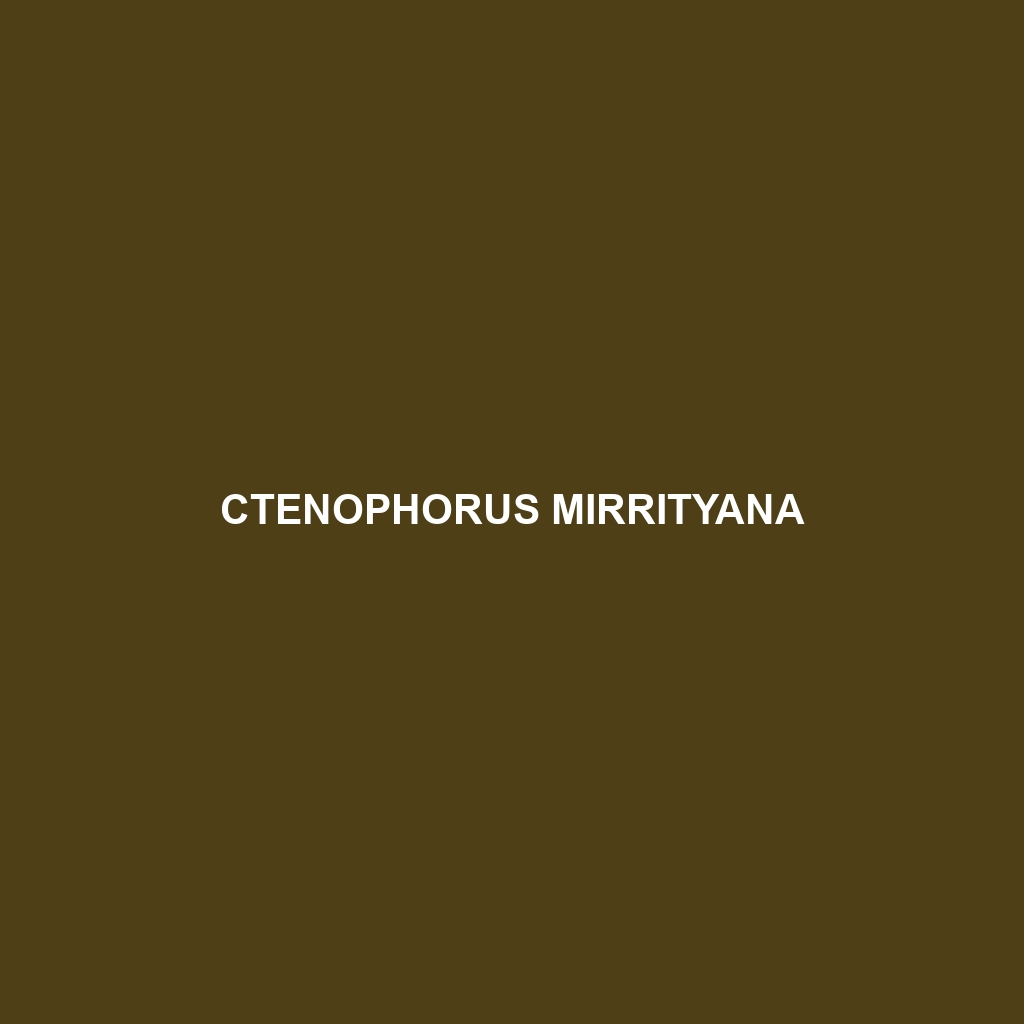Ctenophorus mirrityana: An Overview
Common Name: Ctenophorus mirrityana
Scientific Name: Ctenophorus mirrityana
Habitat
Ctenophorus mirrityana, commonly known as the Mirrityan rock dragon, is primarily found in the arid regions of Australia, particularly in parts of New South Wales and Queensland. These lizards inhabit rocky outcrops, grasslands, and woodland areas where they can access shelter from predators and extreme temperatures. They are adept at utilizing crevices and ledges for hiding and basking, making them well-suited to their environment.
Physical Characteristics
The Mirrityan rock dragon typically reaches lengths of about 15 to 25 centimeters (6 to 10 inches), including its long tail. Their distinct appearance features a mix of brown, tan, and grey colors, providing excellent camouflage among rocks and soil. Notable features include a narrow head, elongated body, and spiny scales along their back, which help in identification. In males, the brighter coloration during the breeding season serves to attract females.
Behavior
Ctenophorus mirrityana exhibits a variety of interesting behaviors. They are typically diurnal, meaning they are active during the day, often seen basking on rocks or moving about in search of food. Their behavior includes sprinting away from potential threats and performing displays of dominance during mating rituals, where males will engage in contests to establish territory.
Diet
This species primarily feeds on insects, making it an important part of the ecological balance. Common food sources for Ctenophorus mirrityana include crickets, grasshoppers, and other small invertebrates. Their foraging behavior, which involves quick movements and the ability to leap between rocks, showcases their adaptability to hunting in rocky terrains.
Reproduction
Ctenophorus mirrityana has a unique breeding season that typically occurs in the warmer months, from September to December. Females are known to lay clutches of 4 to 10 eggs in sandy or loose soil, which they bury for protection. The hatchlings emerge after a period of incubation, usually around 8 to 10 weeks later, and display independence shortly after hatching, seeking food and shelter on their own.
Conservation Status
The current conservation status of Ctenophorus mirrityana has not been explicitly listed; however, habitat destruction and climate change pose potential threats to this species. Maintaining their natural habitat is crucial to ensure their survival, especially in regions facing environmental pressures.
Interesting Facts
Did you know that Ctenophorus mirrityana exhibits sexual dimorphism? Males are often more vibrant in coloring than females, especially during the mating season, which aids in attracting partners. Additionally, these lizards have been observed performing both defensive posturing and mating displays to communicate with each other.
Role in Ecosystem
Ctenophorus mirrityana plays a vital role in its ecosystem as a predator of insects and a prey species for larger predators, including birds of prey and reptiles. Their presence helps regulate insect populations, and they also serve as indicators of ecological health within their rocky habitats.
